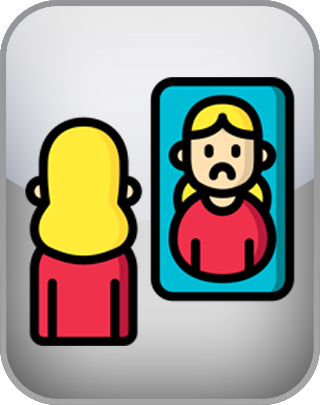Negative Self-portrayal Test (NST)
The Negative Self-portrayal Test, derived from the Negative Self-portrayal Scale (NSPS) developed by D. A. Moscovitch and V. Huyder (2011) serve as a valuable tool for assessing personality traits related to negative self-portrayal. This instrument is designed to identify behavioral and emotional patterns that may influence interpersonal interactions, emotional well-being, and daily functioning. Rather than focusing on diagnostic labels, the test aims to facilitate self-assessment and provide insights into the underlying factors shaping individual experiences. It offers a structured approach to understanding the dynamics of social behavior and its impact on various aspects of life.
To take the test, enter your input below.
Question 1 of 27
I feel insecure about being seen as socially awkward.
| Disagree | Agree |
NEXT
The IDRlabs Negative Self-portrayal Test was developed by IDRlabs, based on the Negative Self-portrayal Scale (NSPS).
Negative self-portrayal refers to the tendency to view oneself in a consistently unfavorable light, often influenced by internal insecurities and external pressures. This mindset can encompass various aspects, including physical appearance, social competence, and emotional stability. Individuals who struggle with negative self-portrayal often focus on perceived flaws, magnifying them to the extent that they overshadow strengths and accomplishments. This can lead to a cycle of self-criticism that is difficult to break.
One significant consequence of negative self-portrayal is its impact on mental health. It often contributes to conditions such as anxiety, depression, and low self-esteem. When individuals constantly focus on their shortcomings, they may feel unworthy or incapable, which can hinder their ability to form healthy relationships or pursue personal goals. Over time, this negative self-view can become deeply ingrained, shaping how they perceive themselves and their value in social and professional settings.
Another aspect of negative self-portrayal is its effect on social interactions. People who view themselves poorly may struggle with confidence, leading to difficulties in expressing themselves or engaging with others. They might avoid social situations altogether, fearing judgment or rejection, which reinforces feelings of isolation and inadequacy. This creates a feedback loop where negative self-perception further deteriorates their ability to connect with others, worsening their self-image.
Physical appearance is a common focus of negative self-portrayal, especially in a society that emphasizes unrealistic beauty standards. People who feel unattractive or flawed may develop body image issues, leading to behaviors such as excessive dieting, avoiding mirrors, or even self-harm. This obsession with appearance often detracts from more meaningful aspects of identity, such as character, skills, and achievements, further entrenching feelings of worthlessness.
Overcoming negative self-portrayal requires intentional effort and support. Strategies such as cognitive-behavioral therapy, practicing self-compassion, and seeking constructive feedback can help individuals reframe their self-perception. Focusing on strengths, building supportive relationships, and setting realistic goals can also empower individuals to see themselves in a more balanced and positive light. Recognizing and addressing negative self-portrayal is crucial for fostering mental well-being and achieving personal growth.
As the publishers of this free test, which allows you to screen yourself for negative self-portrayal, we have strived to make the test as reliable and valid as possible by subjecting this test to statistical controls and validation. However, free online quizzes such as the present test do not provide professional assessments or recommendations of any kind; the test is provided entirely “as-is.” For more information about any of our online tests and quizzes, please consult our Terms of Service.

